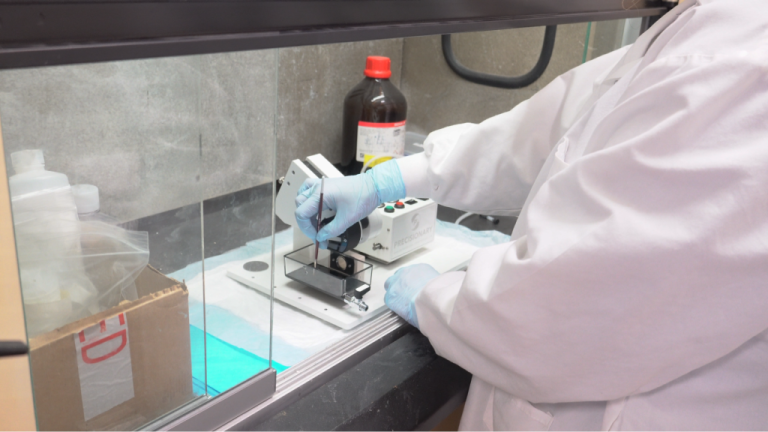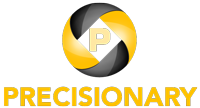Vibrating Microtome and Vibratome: Understanding Similarities and Differences
- Original post date:
Share on social
If you’re involved in tissue sectioning, you’ve probably heard the terms “vibrating microtome” and “vibratome” thrown around quite a bit. Spoiler alert: they’re actually the same thing! But let’s dive a bit deeper into what these nifty tools are, their history, and how Precisionary Instruments has made some game-changing improvements over the years with our Compresstome vibratome models.
What Exactly Is a Vibrating Microtome (or Vibratome)?
A vibrating microtome, or vibratome, is an instrument used to cut thin slices of tissue. This is super important for preparing samples for microscopic examination, especially when you’re working with delicate or fresh tissues that don’t play nice with traditional methods. The key here is the vibrating blade, which makes precise cuts with minimal damage to the tissue (Figure 1).

Figure 1. The basic vibratome mechanism. The vibrating blade on a vibratome can be horizontal or vertical. Vibratomes cut samples into a buffer tray to create free-floating tissue sections.
A Quick Trip Down Memory Lane: The History of Vibratomes
The vibratome concept popped up around the mid-20th century. Scientists needed a better way to cut fresh, unfixed tissues because the old-school microtomes, which use a static blade, often ended up squishing and ruining the samples. Enter the vibrating blade, which allowed for smoother, more precise cuts.
The first commercial vibratome hit the market in the 1960s (Figure 2). These early models were groundbreaking but still had some kinks to work out. Fast forward a few decades, and thanks to tech advancements, vibratomes have become much more efficient and user-friendly.

Enter Precisionary Instruments and the Compresstome Vibratome
This is where we come in! Precisionary Instruments set out to revolutionize tissue sectioning with the Compresstome vibratome. We listened to researchers and clinicians to design a tool that not only fixed the issues of older models but also brought some awesome new features to the table.
Our first Compresstome model introduced an innovative specimen tube system that securely held the tissue in place, cutting down on vibrations and improving slice quality. And we didn’t stop there! Here are some of the cool features that make our Compresstome models top-notch:
- Specimen Tube System: This system keeps the tissue super steady, reducing movement and ensuring consistent slice thickness. It’s especially handy for small or delicate samples.
- Adjustable Cutting Parameters: You can tweak the vibration frequency and amplitude to fit your specific needs. This means higher quality sections tailored to your samples.
- Enhanced Blade Stability: Our robust blade holder minimizes blade movement, giving you clean, uniform cuts every time.
- User-Friendly Interface: We know you have enough on your plate, so we designed the Compresstome to be easy to use with intuitive controls.
- Versatility: From brain and spinal cord to liver and lung, the Compresstome can handle a wide range of tissues, making it a versatile tool for both research and clinical applications.

Why Choose the Compresstome Vibratome?
Simply put, our continuous improvements and innovative features make the Compresstome the go-to choice for researchers and clinicians around the globe. We’re committed to quality and precision, ensuring that every Compresstome model delivers exceptional performance.
So, the next time someone mentions a vibrating microtome or vibratome, you’ll know they’re talking about the same incredible tool. And when it comes to the best in the biz, you can confidently say the Compresstome from Precisionary Instruments is at the top.
For more details about our Compresstome models and how they can boost your research, feel free to visit our website or reach out to us. We’re here to help you achieve your scientific goals with the best instruments out there!
Thanks for reading, and happy slicing!
Share on social
